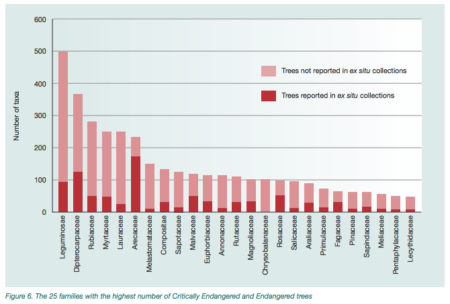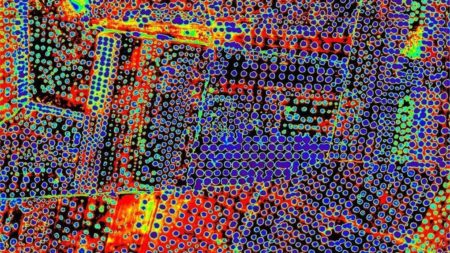I’m not sure we have ever pointed to the Global Trees Campaign’s set of surveys of ex situ collections. There are individual surveys of ebony, Betulaceae, conifers, Zelkova, Rhododendron, maple, oak and Magnoliaceae, plus “Conserving the World’s Most Threatened Trees: A global survey of ex situ collections.” This came out in 2015 and includes a bunch of crop wild relatives.
Nibbles: Carrot breeding, BIEN, Protected areas databases, Brazilian genebanks, Endangered coconut genebank, DSI, ABS, Climate pix, Botanical pix double, Potatoes galore, Pandanus language, Archaeological double, Palestinian seed saving
- Putting the polyacetylene back into carrots.
- The Botanical Information and Ecology Network gets an upgrade. Any CWRs among its 18,844,855 more observations?
- And any is protected areas? This will tell how well they’re managed. Mash up with this spatial database on indigenous lands?
- Otherwise, there are genebanks, though not enough in Brazil, apparently.
- And not always safe.
- What to do with Digital Sequence Information? Would be nice to be clear on what it is.
- ABS broken down by ISF. And the CGIAR. Not DSI though.
- Need climate visuals? Well, who doesn’t.
- The Columbian Exchange has visuals also.
- And the Royal Horticultural Society too.
- Speaking of Columbian Exchange: frites. And Vavilov, chefs, etc.
- Speaking about nuts in PNG. Comment by Jim Croft, who would know: “Except the species illustrated is the widespread oceanic strand species, Pandanus tectorius, not the endemic highland crop ‘karuka’, Pandanus julianettii.”
- 5000-year-old brewery in Egypt.
- 14,000-year-old bread.
- Fast forward 14,000 years.
Brainfood: Community forests, Pepper CWR, Banana spread, Blight plasticity, VIR wheat
- Research frontiers in community forest management. Trends are for hybrid business models, REDD+ interactions and the use of secondary data.
- Production of embryo rescued hybrids between the landrace “Friariello” (Capsicum annuum var. annuum) and C. baccatum var. pendulum: phenotypic and cytological characterization. Another crop wild relative enters the arena.
- Earliest Musa banana from the late Quaternary sequence at Fahien Rock Shelter in Sri Lanka. People used wild bananas for 40,000 years before domesticated triplods arrived 6000 years ago.
- Gene expression polymorphism underpins evasion of host immunity in an asexual lineage of the Irish potato famine pathogen. “…17 genes are not expressed in one of the two…isolates despite apparent absence of sequence polymorphisms.”
- Novel sources of resistance to Septoria nodorum blotch in the Vavilov wheat collection identified by genome-wide association studies. The collection that keeps on giving.
Brainfood: Italian hotspots, Spanish apples, ICRISAT proso, Scattered trees, Underutilized Malaysian fruit, Saudi chickens, AnGR, Double dates, European threatened plants, Pepper origins, Intensification outcomes, Breeding & diversity, Cold storage, African rice
- A methodological approach to identify agro-biodiversity hotspots for priority in situ conservation of plant genetic resources. Interestingly, the centre of Italy comes out on top.
- Genetic diversity and core collection of Malus × domestica in northwestern Spain, Portugal and the Canary Islands by SSRs. There is material in common between Galicia and the Canary Islands.
- Diversity and trait-specific sources for productivity and nutritional traits in the global proso millet (Panicum miliaceum L.) germplasm collection. Out of 200, 26 were high in at least 2 nutrients.
- The importance of scattered trees for biodiversity conservation: A global meta‐analysis. It’s pretty high.
- Origin and diversity of an underutilized fruit tree crop, cempedak (Artocarpus integer, Moraceae). The germplasm collections are not too bad, at least for the cultivated form.
- Genetic diversity of Saudi native chicken breeds segregating for naked neck and frizzle genes using microsatellite markers. The 6 breeds are diverse and show no inbreeding. Yet.
- Conservation of breeds and maintenance of biodiversity: justification and methodology for the conservation of Animal Genetic Resources. Ah, so that’s why they did the above.
- What are palm groves of Phoenix? Conservation of Phoenix palm groves in the European Union. Feral can still be useful.
- Date Palm Agrobiodiversity (Phoenix dactylifera L.) in Siwa Oasis, Egypt: Combining Ethnography, Morphometry, and Genetics. Some locally recognized and named types are in fact collections of genetically distinct clones that somehow go together anyway: call them “ethnovarieties” if you wish. But not feral.
- How to meet the 2020 GSPC target 8 in Europe: priority-setting for seed banking of native threatened plants. 62.7% of European threatened species are already in genebanks, but the others won’t collect themselves. No word on what to do about dates.
- Evolutionary history of the chili pepper Capsicum baccatum L. (Solanaceae): domestication in South America and natural diversification in the Seasonally Dry Tropical Forests. Probably originated in Bolivian Amazonia and inter-Andean valleys.
- Social-ecological outcomes of agricultural intensification. Win-wins are like hen’s teeth.
- Plant breeding and diversity: A troubled relationship? There may be another bottleneck coming.
- Rapid loss of seed viability in ex situ conserved wheat and barley at 4°C as compared to −20°C storage. 4°C is not cold enough for long-term conservation.
- Genetic control of seed shattering during African rice domestication. Multiple genes lead to a range of non-shattering phenotypes.
Keeping an eye in the sky on olives
The latest on the very troubling Xylella outbreak in olives is that you can spot infestation from the air before it’s obvious on the ground.
The new research, published in the journal Nature Plants, demonstrates the first way to spot infected trees months before signs are visible to farmers. The scientists analysed more than 7,000 olive trees in 15 Italian groves over two years, both tree-by-tree on the ground and from the air.

